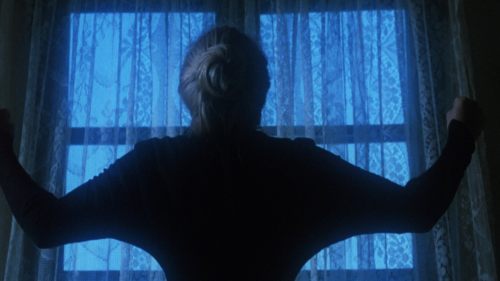Exploitation TV: Volume One
For cinephiles, the definition of home video label Vinegar Syndrome’s name is something like a secret handshake. The disease it references consumes celluloid. When film stock starts to degrade, it releases acetic acid, the key ingredient in (you guessed it) vinegar. This phenomenon became a plague during the '80s, chewing up prints of pictures improperly stored in hot, humid conditions. In many cases, where reels of smaller films were scarce due to budgetary restrictions, one bad case of vinegar syndrome could rob the planet of an artist’s work.
According to a ‘12 study conducted by the Library of Congress, only 14% of nearly 11,000 movies made between 1912 and 1930 exist in their original format. Around 70% were lost completely. Coming in at a close second in terms of casualties is the Exploitation Era. This really shouldn’t come as a surprise to anyone, as many of the weirder, more obscure movies made during these decades of disrepute are pictures we’ve probably never heard of in the first place. Thankfully, the Bridgeport, Connecticut boys at VS own a private archive, from which they’ve been pulling and scanning prints of overlooked horror, exploitation and smut cinema from all eras. To make it easier on all us degenerates, they’ve even established a streaming service, where you can log in and watch all the back alley oddities they’ve been uncovering and preserving, so that true vinegar syndrome doesn’t rob us of any more great trash art.
In this inaugural edition of Exploitation TV, we’re taking a look at three of this writer’s personal favorites currently available on the site, before diving a bit deeper each week into this digital wasteland…
Raw Force [1982] (d. & w. Edward D. Murphy)

Attempting to communicate the joys of Raw Force via human language is like trying to appraise sculpture utilizing slam dancing. How do you describe a movie that crams this much WTF foolishness into one 90-minute gift? Once you take into account the fact that writer/director Ed Murphy (a former bit actor looking to make a larger mark on the world) personally transported the film’s negative back from the Philippines once shooting wrapped (to avoid confiscation thanks to its content and somewhat illicit production methods), you can’t do anything but admire this gonzo labor of love. Alternately titled Kung-Fu Cannibals after its initial 150-screen run, Raw Force is like a lo-fi action grab bag, stuffed to the gills with cheap thrills. Wanna see a man stop a truck dead just by jump kicking its windshield? You got it. How ‘bout all-out war against a tribe of bloodthirsty savages looking to throw down with bazookas? Sure. That’s there, too.
The boys from the Burbank Karate Club (along with Cookie from the LAPD Swat team) board a degrading cruise ship, where bizarre beardos break ice blocks with their domes in order to fuel boozy orgies and pole fighting demonstrations. Once the weekend warriors come face-to-face with Filipino Hitler (you’ll know him when you see him) and the zombie-wielding cannibal monks to whom he feeds women on a secluded island, heavy caliber weaponry is fired, folks are mauled by wild animals, and breasts are bared for really no reason whatsoever. While certainly best enjoyed with a rowdy audience (this writer’s seen it twice on 35mm with sold out crowds who lost it), Raw Force still works wonders in the comfort of your own home, preferably with a cold drink in hand. This is an incomparable consolidation of everything you love about sleazy, Times Square fare.
Night Train to Terror [1985] (d. John Carr, Phillip Marshak, Tom McGowan, Jay Schlossberg-Cohen, Greg C. Tallas, w. Philip Yordan)

Horror anthologies have recently come back in a big way. However, none have ever topped George A. Romero’s Stephen King collabo, Creepshow. Yet even Creepshow doesn’t sport a troupe of coked out New Wave dancers, all preening and prancing in their neon get up to a borderline unlistenable pop track. Night Train to Terror is somewhat incoherent; its vignettes stitched together using a bizarre through line regarding God and “Mister” Satan showing each other “case studies” intended to reveal various aspects of human nature (all in the name of deciding whether or not civilization should be extinguished). The tonal/narrative inconsistencies most certainly come from the fact that this is a Frankenstein film (just look at how many writers and directors are credited), partially salvaged from an unfinished slasher titled Scream Your Head Off. Night Train to Terror plays like cough syrup-induced half-recollections of Amicus collections, only the budget was probably blown on drugs instead of investing in marquee actors. It’s skeevy, odd, and showcases out of place music video interludes destined to get stuck in your head for years after your initial run in with its wanton goofiness.
Nevertheless, one could argue that there’s something certainly going on under the surface of the picture’s Z-Grade artifice. Night Train to Terror often feels like sidetracked transmissions from another dimension, constructed entirely out of discarded acid tabs and crushed demo cassettes. The metaphysical foundations on which it’s built are endlessly captivating, as God and Mr. Satan debate what to do about “the dancers”. At one point, Satan even comments that the music they love is pure garbage, while God points out that all creativity is simply a series of trials and errors. The movie not only delivers a Philosophy 101 guide to the apocalypse, it also seems to be commenting on how damn hard it is to make a movie at all. This meta-textual strangeness cannot be ignored, as Night Train to Terror becomes a trashy lesson on the difficulties of creation in the face of various confines and setbacks. That’s a crash course in exploitation itself.
The Doll Squad [1973] (d. Ted V. Mikels, w. Jack Richesin, Pam Eddy, Ted V. Mikels)

It’s hard not to wonder, had Ted Mikels and Andy Sidaris ever crossed paths during their respective time on this planet, if they could’ve teamed up and delivered the silliest action picture ever made. Mikels’ movies are jam packed with ambition, and The Doll Squad shows off just how big of a backyard dreamer he really was. Pre-dating Charlie’s Angels by a full three years, it’s a girl gang spy romp that’s peculiarly ahead of its time. Coming off like the Fox Force Five pilot Mia Wallace describes to Vincent Vega in Pulp Fiction writ weird, superspy Sabrina Kincaid rounds up the ostensible multi-ethnic gang of expert female operatives in order to hunt down a faux Bond villain threatening the globe with annihilation. You can feel Mikels flexing against his budgetary limitations at every turn, stretching every penny he’s got into a dollar as he brings these pulp reveries to life.
The very best pieces of exploitation from any era were the ones that felt unnaturally progressive, and The Doll Squad definitely fulfills this requirement. Beyond starring multiple women of color, there’s an electric current of cinematic empowerment that charges through Mikels’ calamitous romp. The gatherings the women hold to discuss their next moves are titled Women’s Lib meetings, and multiple men are always trying to take them down wherever they go. Though the titular Squad is under the employ of the US Government for their current mission, they’re a completely independent unit, able to turn down any job because it doesn’t fit with their political ideals. Sure, Mikels lets his camera drift over their hard bodies in typical grindhouse fashion (he had to put asses in those sticky seats, after all), but all the leering male sexuality resembles a crude mask worn over a distinctly feminist visage. The Doll Squad is a cheer-inducing cheapie, placing a gaggle of machine-gun toting babes front and center and letting them kick dudes’ asses around the globe. It’s essential viewing.
Tune in next week for three more picks from your new favorite channel. In the meantime, log in to Vinegar Syndrome’s streaming service to embark upon your own filthy adventures.



